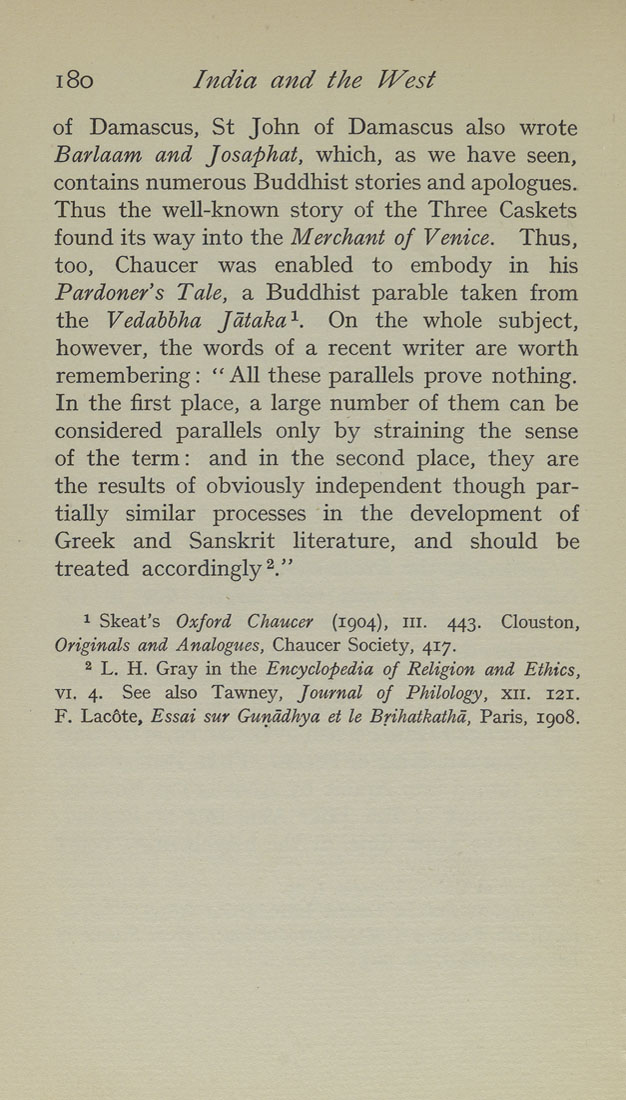i8o India and the West
of Damascus, St John of Damascus also wrote
Barlaam and Josaphat, which, as we have seen,
contains numerous Buddhist stories and apologues.
Thus the well-known story of the Three Caskets
found its way into the Merchant of Venice. Thus,
too, Chaucer was enabled to embody in his
Pardoner's Tale, a Buddhist parable taken from
the Vedahhha Jdtaka'^. On the whole subject,
however, the words of a recent writer are worth
remembering: "All these parallels prove nothing.
In the first place, a large number of them can be
considered parallels only by straining the sense
of the term: and in the second place, they are
the results of obviously independent though par¬
tially similar processes in the development of
Greek and Sanskrit literature, and should be
treated accordingly 2."
1 Skeat's Oxford Chaucer (1904), in. 443. Clouston,
Originals and Analogues, Chaucer Society, 417.
2 L. H. Gray in the Encyclopedia of Religion and Ethics,
VI. 4. See also Tawney, Journal of Philology, xii. 121.
F. Lac6te, Essai sur Gunddhya et le Brihatkathd, Paris, 1908.
|








